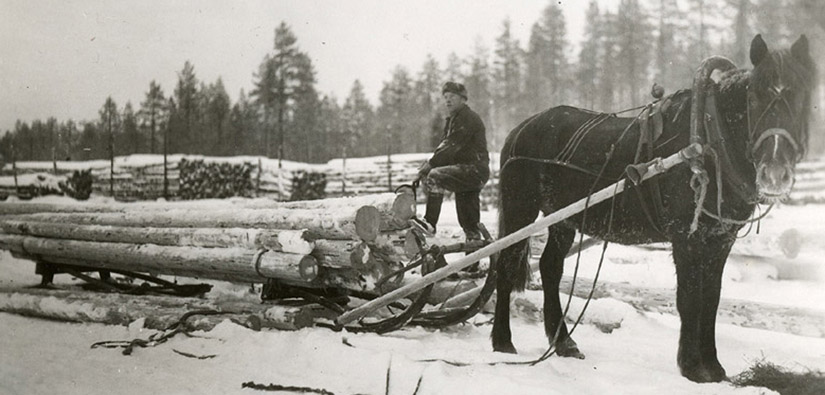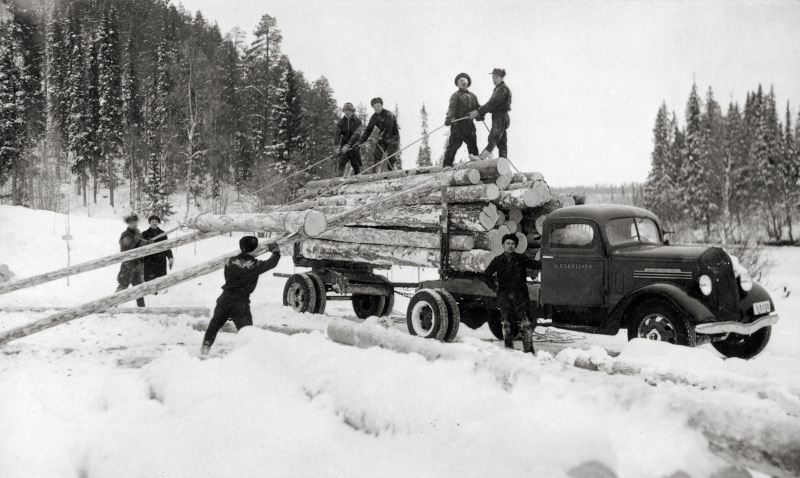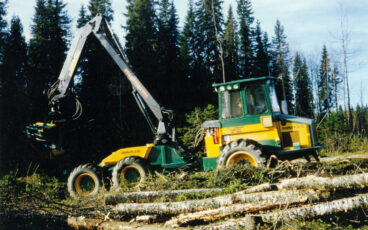History of Forestry

Metsähallitus has sold timber for different needs since the very beginning of its operations, for a while mainly at auctions. In the early 1900s Metsähallitus sold, among other things, railway cross-ties and firewood to the national railway board, as well as timber to sawmills. Metsähallitus also established its own sawmills which, however, were ceded in 1932 to Veitsiluoto Oy, a company in which the state had a majority holding. The focus of the forest industry gradually switched from sawmilling to paper and board production which, in turn, led to an increase in the use of pulpwood.
The role of forest management is growing

Before the Second World War, forest management began to garner more and more attention. The regeneration of felling areas, initially through sowing and later by planting, became common in the early 1930s. The first mires were drained as early as the 1910s in order to expand the area of productive forestland, and after the development of mechanical ditching methods in the 1960s and 1970s, mires were drained at a furious pace.
During the Second World War, Metsähallitus had the uncharacteristic task of producing charcoal and chopped firewood for wood-gas modified vehicles. Following the war, extensive fellings were carried out on Metsähallitus’ lands in order to pay for war reparations as well as to remunerate the men returning from battle. A significant amount of Metsähallitus’ lands was also given up for resettlement purposes.
Intensive forestry emerges

In the 1950s fellings and transportation conditions were intensely developed, and as the demand for wood products grew, fellings reached even farther into the countryside. In the 1960s and 1970s efficient timber production received a significant amount of attention, in addition to intensive soil cultivation, sapling stand improvement and fertilisation. At the same time, forestry was mechanised; trucks, forest tractors and chainsaws were introduced. The 1980s saw the arrival of harvesters and various information systems used as forestry tools, which in the next decade became a part of everyday forestry operations. In 2003, harvesters were used in around 95 percent of fellings. With the increase in mechanisation, the tasks of foresters have broadened from carrying out fellings to conducting forest management work and different planning tasks.
Multiple and sustainable use of forests
Large-scale public debate on the state of forests and conservation was sparked up in the 1980s, and fellings carried out in the wilderness areas of Kessi and Talaskangas led to a conflict between conservationists and forest industry representatives. The predominant mindset of timber production did, indeed, change in the 1990s, with more focus on multiple objectives and ecologically, socially and economically sustainable use of forests. With the help of such documents as Metsähallitus’ Environmental Guidelines to Practical Forest Management, environmental management became a part of everyday forestry. Metsähallitus’ environmental system based on the ISO 14001 standard was certified in 1998 and has further increased the monitoring and continuous development of activities. At the start of the 21st century, all of Metsähallitus’ commercial forests were included in the PEFC forest certification scheme.
From 1997 to 2000, comprehensive natural resource plans, which are renewed regularly, were drawn up for all state-owned land and water areas. The participatory, co-operative and open practices developed by Metsähallitus in the 1990s are complied with in the natural resource planning process.